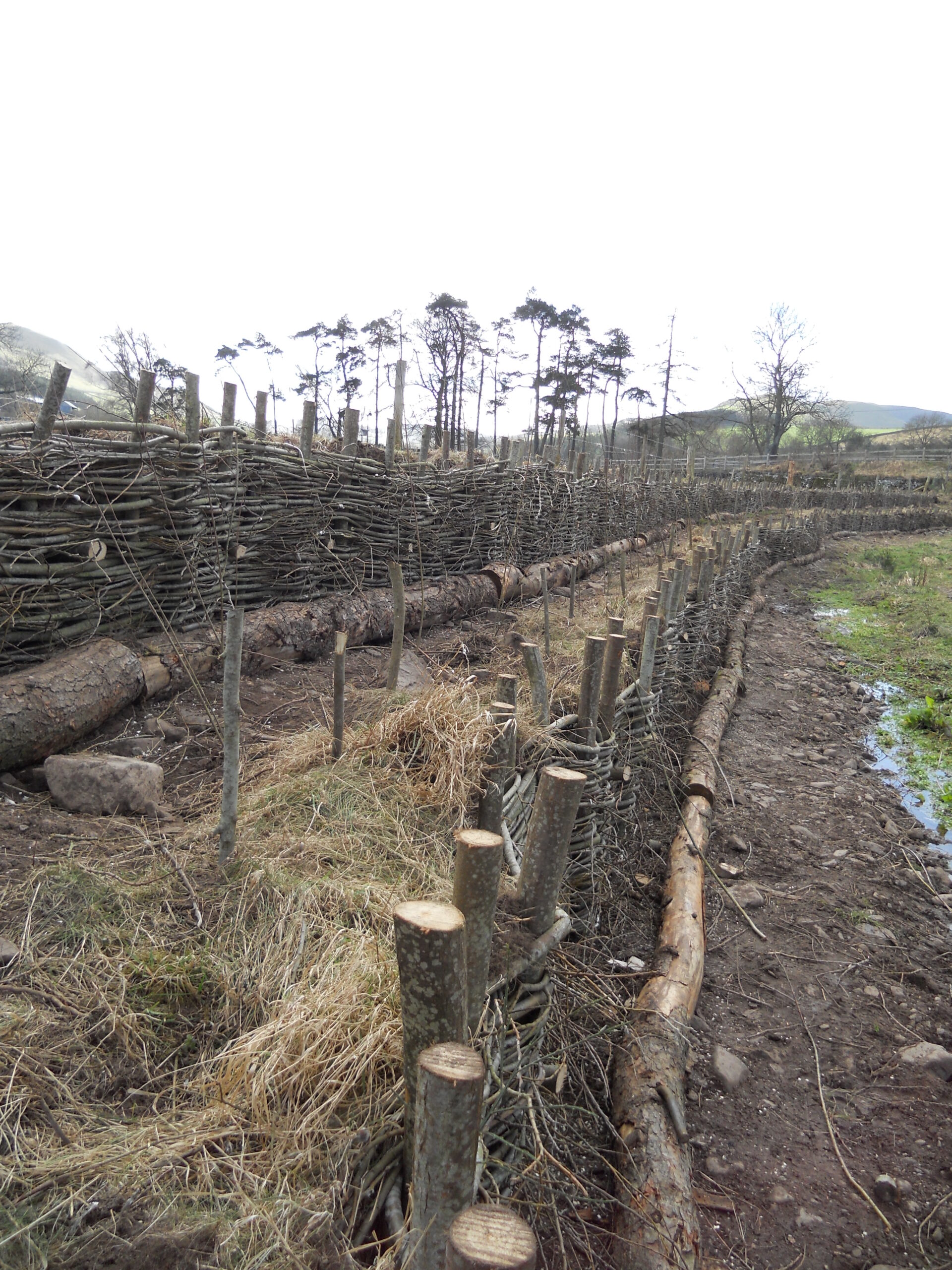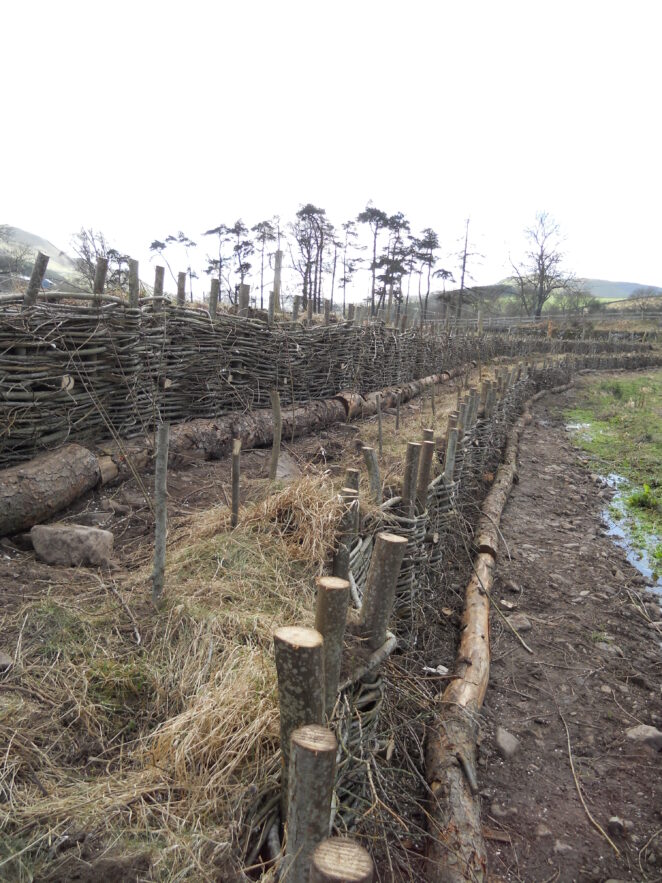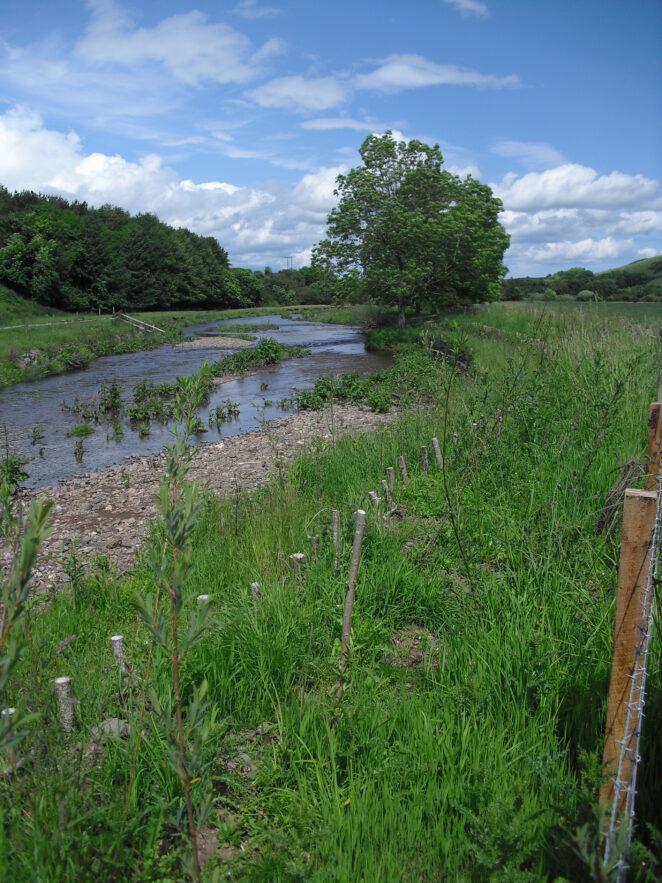Case-study /
Sustainable Riverbank Protection


Erosion is one of many natural river processes. Problems arise where the rate of erosion is considered too rapid to be acceptable. This can be problematic for a number of reasons, for instance loss of valuable agricultural land, risk to local infrastructure and sedimentation downstream.
In upland areas it is often the case that river floodplains, or haughlands, are the most productive land available to a farm business. For example the haughland at Clifton-on-Bowmont is currently used for arable crops and is the most productive, and valuable, land on the farm and in the valley.
Land managers can lose large amounts of their high productivity land to riverbank erosion which can have significant detrimental impacts upon a farm business. A loss of such land may mean that a farm business could lose arable fields, as outlined in this case study, or high quality land used for grazing and lambing, thus having an economic impact. Taking action against riverbank erosion can mean an increase in business resilience in economic terms, whilst also helping a farm business become more resilient to climate change. It is predicted that severe storms will become more regular, making aggravated riverbank erosion more likely in the future. Riverbank protection works have multiple benefits, for instance the DEFRA Farming and Watercourse Management Handbook Section 7 (available online) states that the additional benefits of erosion control are;
- Stabilisation of river banks reduces loss of agricultural land
- Reduction of unwanted deposition in other areas
- Reduction of excessive sedimentation within watercourses,which silts up gravel beds and destroys spawning and invertebrate habitat
- Reduction of channel widening which results in shallow flows especially in summer, which can cause increases in water temperature and reductions in oxygen levels, leading to fish mortality
- Development of stable banksides creates habitat for mammals and birds as well as river bank vegetation. The more rapidly vegetation can be established on newly stabilised banks, the better
The aim of this demonstration site is to trial different bank protection techniques to help inform those interested in implementing such work.
Case Study
Clifton-on-Bowmont, in the Scottish Borders, has a number of sections of eroding riverbank, resulting in a number of management issues and also threatening vital local infrastructure. The sites have been identified through the innovative Farm Resilience Plan approach, which is being undertaken with individual farm holdings by Cheviot Futures. As part of the resilience planning the land manager considered the cost implications of both completing and not completing the work in order to come to an informed decision with regard to taking the work forward.
Cheviot Futures is implementing a range of green bank protection measures on the site, to act as a demonstration opportunity to compare and contrast the merits (or otherwise) of different approaches. This work was supported by a site-specific consultant’s report. This work required authorisation from SEPA (Scottish Environment Protection Agency) and consent from SNH (Scottish Natural Heritage), which is an important consideration when researching similar work on any holding (similar authorisations are required from Environment Agency in England and Natural England).
SEPA CAR Authorisation Costs (2012 fees)
- Registration level activities £104 (paper application)
- Simple Licence activities £594
It is important that a farmer weighs up the cost of implementing such work against the cost implications if no work was completed. The section below aims to give detail of four types of riverbank protection established at Clifton-on-Bowmont in 2012, including project description, costs and consents required.
Site 1 – Timber revetment design
35m length of bank protected using a timber revetment design, using vertically piled timbers backfilled with local material and live willow, held in place by hessian.
This work requires a minimum of Registration level authorisation from SEPA and SSSI consent from SNH.
Total cost (net costs) = £3 274Cost per linear metre = £94
Site 2 – Filtrexx approach
80m of bank protected using the innovative Filtrexx approach, utilising compost filled socks, pre-seeded with native riparian grasses to facilitate early re-vegetation of the riverbank. The work comprises a two to three layer terrace of filled socks, secured using enhanced specification platypus anchors and wooden stakes.
This work required a Simple Licence level of authorisation from SEPA.
Total cost (net costs) = £14 885Cost per linear metre = £186
Site 3 – Willow Spiling
80m of bank protected using an enhanced specification of willow spiling work, creating a living barrier of woven willow. The technique employs a two tier terrace, with timber toe protection alongside tightly woven native willows plus planted willow material.
This work required a Simple Licence level of authorisation from SEPA.
Total cost (net costs) = £10 725Cost per linear metre = £134
Site 4 – Engineered log jam (ELJ)
35m of bank protected using an engineered logjam approach using vertical and horizontal timbers piled into the ground and secured together with mild steel rods, with backfill comprising locally won sediment, brash and living willow material.This work did not require authorisation from SEPA but did need separate SSSI consent from SNH.
Total cost (net costs) = £3 400Cost per linear metre = £97
Lessons learnt
In September 2012, the flood resilience projects met their biggest test with a large flood event affecting the site. The value of Cheviot Futures demonstration works lies in the acceptance that some work will prove to be less viable than alternative options, and the process of determining what works and what does not.
At Clifton-on-Bowmont the bank protection ELJ survived intact, as did the newly constructed bar apex ELJ features (although one is now within the Bowmont due to channel change!). The willow spiling work and the Filtrexx bank stabilisation both suffered minor damage to the downstream extent, highlighting the need to effective integration to stable ground and consideration of the effects on flow of features such as mature trees. The timber palisade revetment site suffered significant damage for the second time (a section was removed in May 2012 and additional work carried out by the farm business to reinstate and extend the work), suggesting that this approach was not the most appropriate for the site.
Policy context
Stabilising riverbanks has multiple benefits, as discussed in the Defra farming and watercourse management handbook. It is vital that land managers are supported to undertake such works in the future, whether through resource to help with licence authorisations or capital grants to help implement the works on the ground. It is also important for licensing agencies to fully understand the objectives of such projects and work closely with those wanting to explore the possibility of implementation.
Acknowledgements
Funding was made available from Northumberland Uplands New LEADER Local Action Group (funded by Rural Development Programme England, which is funded through European Union and DEFRA/Scottish Government).



